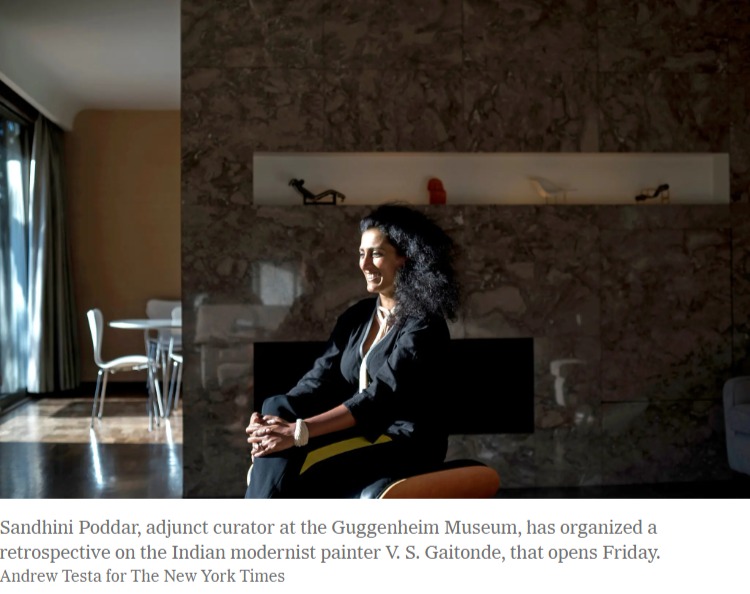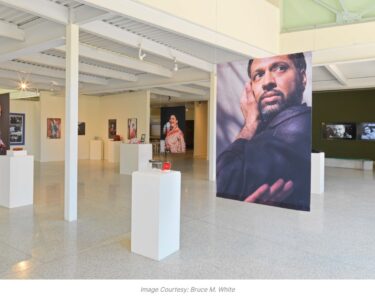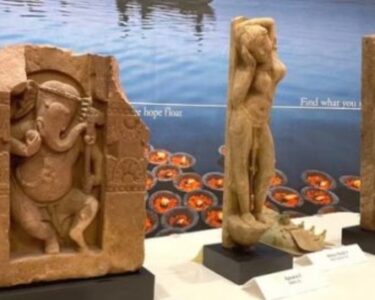By Arthur Lubow
When Sandhini Poddar first saw the paintings of V. S. Gaitonde, their silence spoke loudly. Displayed in a group show in 1997 at the National Gallery of Modern Art in Mumbai, the large abstract canvases, with layered colors and textures, invited long contemplation. “This was a feeling that wasn’t ephemeral, it stayed with me, and I could recall it whenever I wanted to go to a place of silence,” she said.
Gaitonde, in his early 70s at the time, was living in a one-room rented apartment in New Delhi. Although fellow artists and knowledgeable collectors admired his work, he remained in the shadows, as he preferred. He had friends but never married. He gave few interviews. “He was a special kind of fellow,” said the New Delhi painter Krishen Khanna, a friend. “He didn’t doubt himself. He didn’t go around beating his drum. He was very quiet.”
By the time Ms. Poddar, 38, adjunct curator at the Guggenheim Museum, was in a position to help raise awareness of Gaitonde’s achievement, the painter, whom she never met, was no longer available to assist her. He died in 2001. Exploring the residual traces of his life, she discovered that he left remarkably little trail. There were no heirs. No one had inventoried his output. In a long career, he produced relatively few paintings. “There’s always been a kind of mystery surrounding the artist,” Ms. Poddar said. “He’s almost abstract as a person in that way.” As she researched his self-effacing craft, in preparation for a retrospective that will open on Friday at the Guggenheim, the mysteries of Gaitonde only deepened. His obscurity, however, ended with a dramatic flourish.
Last December in Mumbai, as part of Christie’s first auction in India, a painting by Gaitonde sold for $3.8 million, the highest price ever for a work of modern Indian art. The auction signaled the arrival not only of this singular painter, but also of an entire generation of postwar Indian artists. Almost every work in the sale of Indian modern art fetched a price that was triple its low estimate, said Deepanjana Klein, the Christie’s vice president for South Asian modern and contemporary art.
Gaitonde, who developed a deep interest in the teachings of Zen Buddhism, gradually eliminated all figurative representation from his work.
In 1950, he joined the Progressive Artists, painting pictures that were heavily influenced by Paul Klee. “Klee was a great god here,” said Mr. Khanna, who affiliated himself with the Progressive Artists. “Everyone felt he had opened a whole new book in painting.”
Read the rest @ https://www.nytimes.com/2014/10/19/arts/design/v-s-gaitondes-art-gets-a-guggenheim-retrospective.html






